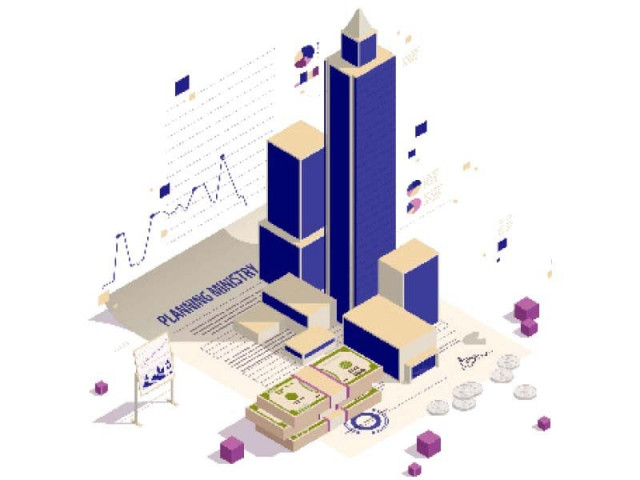Uplift funds, default risk both rise
Ministry demands Rs87b increase in PSDP funds for parliamentary schemes

Amid growing sovereign default risks, the Planning Ministry has approached the prime minister’s office for an increase in the Rs727 billion worth Public Sector Development Programme to get more fiscal space ahead of the general elections.
The demand has been made, despite politically motivated projects being given the lion’s share, against the total development spending of Rs119 billion during the current fiscal year, showed the documents.
The Finance Division may be directed that no cut be made to the Rs727 billion Public Sector Development Program (PSDP) during the current fiscal year, and it considers reasonably increasing the development budget, reads a summary that the Planning Ministry sent to the PM’s Office.
For the current fiscal year, the National Assembly had approved Rs727 billion for the PSDP but last month the Finance Ministry informed the International Monetary Fund (IMF) that the budget will be slashed by Rs258 billion to Rs469 billion.
According to sources, the Planning Ministry now wants the spending pool to be enhanced by at least Rs87 billion against the Rs727 billion original allocation. The Rs87 billion is the money that is given for parliamentarians’ schemes.
The Planning Ministry also requested the prime minister’s office to instruct the Finance Ministry to enhance the release ceiling of the development budget to 50% of the total (Rs363.5 billion) during the first half (July-December). The current first-half ceiling is Rs200 billion.
The Planning Ministry’s move is neither in line with the prevailing economic conditions of Pakistan or the growing demands being made by international financial institutions that have asked for the development budget to be cut to create fiscal space for other essential expenses. As of this week, Pakistan’s gross official foreign exchange reserves slipped to $6 billion, increasing the country’s risk of default once again. Its net external debt repayment requirements for the period between January-March, after excluding all possible rollovers, are about $4.5 billion. Only the monthly import bill is $5.2 billion, yet there seems to be no panic in the official quarters where ‘business as usual’ continues.
A senior Finance Ministry functionary said on Saturday that Saudi Arabia may release the cash amount in the next couple of weeks but did not give any specific date or amount. Pakistan has demanded $3 billion cash from Saudi Arabia to avert the default –the risks for which are increasing every day due to a delay in the revival of the $6.5 billion IMF programme. The foreign lenders have also expressed concerns about transparency in public spending and the ministries’ absorption capacity.
According to the minutes of the World Bank Executive Board that met this week, to approve loans worth $1.7 billion for flood-related projects in Sindh, “The directors underscored the need for the provincial and federal authorities to strengthen the implementation systems in place to ensure increased absorption capacity of development funding and also ensure adequate targeting of communities.” They also underscored the importance of having strong monitoring and evaluation systems in place to make sure reconstruction funds are used transparently and reach those most in need in the affected districts.
As of the first week of December, PSDP spending amounted to Rs119 billion – down by 54% or Rs133 billion when compared to the same period of the last fiscal year – aimed at creating space for other spending.
The government has already released the entire amount of Rs87 billion for parliamentarians’ schemes, but the actual spending in five months remained at Rs11 billion. Another Rs14.6 billion have been given against allocations meant for provincial and special areas. The Housing Ministry also spent Rs2.2 billion, mostly on projects of a political nature.
The decision to release the full amount for the parliamentarians’ schemes has already started to adversely impact the spending allocations for other projects, as disclosed by the Planning Ministry in its summary.
The ministry said that because of the release of the Rs87 billion funds, the rupee authorisation of other ministries had to be curtailed further to 20% against the permissible 30% limit to meet the release requirements of the parliamentarians’ schemes.
The Cabinet Division requested the release of the entire sum of allocated funds of in one go under the SDGs Achievement Program (SAP) in relaxation of the quarterly release limit. The Finance Division in October 2022, however, instead of relaxing the quarterly limit for the parliamentarians’ schemes advised restricting development expenditure within the 30% ceiling up to the second quarter of the current FY.
Accordingly, the rupee authorisation up to the second quarter of the current FY had to be re-adjusted to accommodate the additional government development priorities as the entire revised allocated amount of Rs87 billion for SDGs was to be authorised.
Consolidated additional demand of Rs77.6 billion has already been received in this ministry. The 30% maximum limit of Rs200 billion has almost been exhausted as Rs196 billion were authorised just last month.
The ministry stated that the Finance Division had notified quarterly strategy for the release of the funds for the development budget at the rate of 20% for the first quarter, 25% for the second, 30% for the third and 25% for the last quarter of the fiscal year.
The Finance Division, however, unilaterally amended the development budget release strategy in August and re-set the quarterly ceilings at the maximum level of 10% for the first quarter, 20% for the second quarter, 30% for the third, and 40% for the fourth quarter.
Published in The Express Tribune, December 25th, 2022.
Like Business on Facebook, follow @TribuneBiz on Twitter to stay informed and join in the conversation.



















COMMENTS
Comments are moderated and generally will be posted if they are on-topic and not abusive.
For more information, please see our Comments FAQ